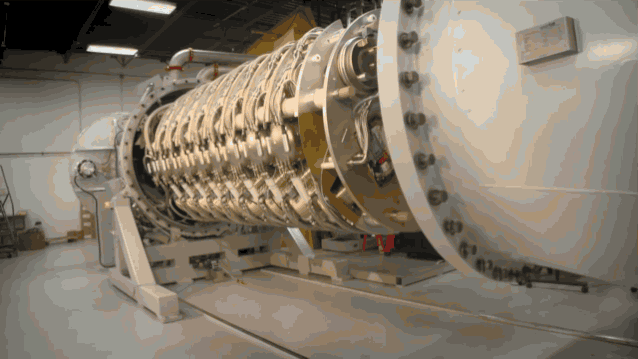Apple has been struggling to produce enough sapphire displays in time for the iPhone 6, but after going straight to the source of the freakishly indestructible glass – GT Advanced Technologies – MIT has learned of the company’s plans to use a giant machine that may solve all of Apple’s sapphire production problems, one slice of sapphire at a time.
The problem with sapphire glass is that while amazingly durable, it’s also ridiculously hard to produce in thin smartphone sized sheets. Apple’s current production methods involve taking a large chunk of sapphire and sawing it down to just a few hundred micrometers thick. It’s time consuming and wasteful, but GT’s new Hyperion 4 Ion Implanter technology could allow it to make paper thin sheets of pure crystal sapphire glass just by bombarding it with hydrogen ions.
GT uses a different approach in its new machine, which is the size of a concrete-mixing truck and operates in its labs in Danvers, Massachusetts. The machine shoots hydrogen ions at a wafer of sapphire, implanting the ions to a depth of 26 micrometers. The wafer can then be removed and heated up so that the hydrogen ions form hydrogen gas, which expands and causes a 26-micrometer-thick layer of sapphire to tear off.
The new machine produces inexpensive sheets of sapphire about half as thick as a human hair that can be peeled off the main block of sapphire. That sapphire block can then be used repeatedly to produce more sheets. The sheets can then be laminated to just about any iPhone, iPad, or iWatch screen to make it much tougher at a much cheaper cost.
Screens made of pure sapphire currently cost about $15 – $20 a piece – five times more expensive than regular ones. Laminating the sapphire sheets onto glass could bring that cost down to just six bucks.
Here’s a video explainer on the new machine straight from GT’s Youtube:
GT’s VP of engineering says all they need to do now is engineer a system that automates the handling of sapphire wafers to make sapphire sheets faster, but according to his estimates, it could take as long as nine months to design and implement the process. Not soon enough for the iPhone 6, but well within range of the iPhone 6S(apphire)?
Via: Gizmodo


